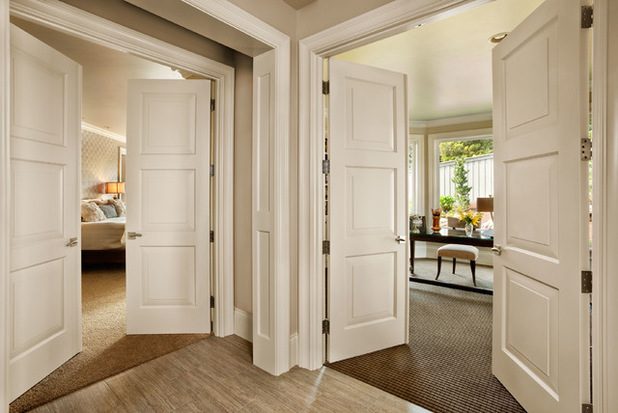According to a 2009 report by the NFPA (the National Fire Protection Association), the chances are pretty good that you will have a fire. The chances that your household will have a reported fire in the average lifetime is 1 in 4. If that doesn’t scare you, the UK government reported over 30 thousand fire cases in a 2015/2016 report. Out of that number, nearly 20% of those cases resulted in injuries or fatalities. That’s some pretty hot stuff. But how can you help ensure you don’t become another number in those statistics?
Start with a Door
Unless you’re a builder, a contractor, or a home improvement enthusiast, chances are you’ve never given much thought to the doors inside your home. It’s also probable that you’ve never given much thought to the types of doors in your home. You can already guess that different types of doors serve different purposes. The most obvious, your internal and external doors. I mean, they’re categorized as internal and external for a reason: one designed for inside and one designed for outside. Simple. But, you would never buy, let alone live in, a house with only ONE type of door. You would also never buy, let alone live in, a house made of sticks or some other flammable material. So why would you live in a house with NO fire resistant doors?
What is a Fire Door, and What Does it Do?
As you’ve already guessed from the name, a fire door isn’t any other door.. It’s a door with a fire-resistance rating, sometimes called a fire-protection rating. A fire-resistance rating refers to how long a passive fire protection system can withstand a fire resistance test. This test can determine how long a door can withstand certain heat of a certain temperature.
As great as it sounds, a fire door doesn’t work alone. As mentioned earlier, it works as part of what a passive fire protection system. A passive fire protection system (PFP) works operates different from active fire protection. Active fire protection, like smoke detectors and fire alarms, alert you to the presence of fire. Whereas, passive fire protection contain, or even slow down, the spread of fires. This passive system consists of fire-resistant walls, floors, and you guessed it, doors.
Fire doors can consist of different materials, like, glass, steel, timber, or aluminum. These doors can consist of gas seals, smoke seals, positive latching mechanisms, and or automatic closing devices. And if you’re worried about the aesthetics of your home, don’t be. A fire door, though usually thicker than a normal door, can look as great as any other door in your home. Here is a range of fire doors you can choose from to fit your home, and your style.
You would need a fire door wherever a fire likely to start, like your kitchen or your living room where your TV is. When there is a fire, the intumescent strips on the door (the sealant on your fire door) expand in response to the heat. When these strips expand, they seal the gaps between the edges of the door and the frame. They seal the rest of your property, you and your family from the flames and smoke. Like other doors, fire doors come in all shapes and sizes. And they can be a life-saving investment
- Creating Lasting Memorials: Honoring Loved Ones with Flat Headstones - June 28, 2023
- The Advantages of Dedicated Server Hosting for Digital Marketing Agencies - May 16, 2023
- Artificial Intelligence: How computer science revolutionized competitive sports - January 5, 2023
- Bitten by a Dog? You May Be Able to Sue - August 1, 2021
- Brighten Up Your Living Room With These Useful Lighting Tips - August 1, 2021
- Animated Short Film Blush Executive Produced by John Lasseter Premiers at Tribeca Film Festival - July 28, 2021
- What You Need to do to Start an Ecommerce Business - July 27, 2021
- How to Start a Campfire: A Guide - June 28, 2021
- 5 Essential Tips to Get the Most Out of Your Online Music Lessons - November 24, 2020
- Strange But Interesting Habits You Learn While Travelling - September 4, 2020



